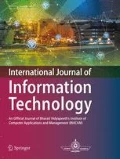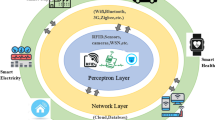Abstract
Opportunistic network (OppNets) routing protocols are improved to run in a situation in which it does not present a consistent end-to-end communication. The investigators of the Delay Tolerant Networks (DTN) team had aimed at the performance of routing protocols which use “Store-Carry-Forward” method. Delay Tolerant Networks routing presumes that the node buffer is unlimited. Thus, the condition for message arraying and dropping strategy, for each inclination is very risky and advantageous in such limited situations. This paper offers an effective eviction strategy to improve the PRoPHET routing protocol quality. This strategy adds to the PRoPHETv2 routing protocol, which is currently proposed FIFO by default. The investigators evaluate the influence of several parameters, including the message life/buffer time, based on the performance of the PRoPHET pertaining to delay, replication/hop number, and delivery ratio. This paper evaluates the influence of individual parameter along with the MOFO drop strategy. The effectiveness of the projected method is assessed and compared with various procedures according to metrics, for instance, overhead, latency, and delivery ratio. The simulation findings ascertain that the applied dropping strategy enhances the efficiency of PRoPHET routing compared to the other different dropping strategies.




Similar content being viewed by others
References
Conti M, Giordano S, May M, Passarella A (2010) From opportunistic networks to opportunistic computing. IEEE Commun Mag 48:126–139. https://doi.org/10.1109/mcom.2010.5560597
Spyropoulos T, Psounis K, Raghavendra CS (2005) Spray and wait. Proceeding of the 2005 ACM SIGCOMM workshop on delay-tolerant networking—WDTN 05. ACM SIGCOMM, Beijing. https://doi.org/10.1145/1080139.1080143
Lindgren A, Doria A, Schelén O (2004) Probabilistic routing in intermittently connected networks. Service assurance with partial and intermittent resources lecture notes in computer science, pp 239–254. https://doi.org/10.1007/978-3-540-27767-5_24
Sati S, Probst C, Graffi K (2016) Analysis of buffer management policies for opportunistic networks. 2016 25th International Conference on Computer Communication and Networks. ICCCN, USA. https://doi.org/10.1109/icccn.2016.7568494
Pan D, Ruan Z, Zhou N et al (2013) A comprehensive-integrated buffer management policy for opportunistic networks. EURASIP J Wirel Commun Netw. https://doi.org/10.1186/1687-1499-2013-103
Helmy A, Legendre F (2011) Proceedings of the 6th ACM workshop on Challenged networks, CHANTS@MOBICOM 2011. ACM, USA
Krifa A, Barakat C, Spyropoulos T (2012) Message drop and scheduling in DTNs: theory and practice. IEEE Trans Mob Comput 11:1470–1483. https://doi.org/10.1109/tmc.2011.163
Shin K, Kim S (2011) Enhanced buffer management policy that utilises message properties for delay-tolerant networks. IET Commun 5:753–759. https://doi.org/10.1049/iet-com.2010.0422
Rashid S, Ayub Q, Abdullah AH (2015) Reactive weight based buffer management policy for DTN routing protocols. Wireless Pers Commun 80:993–1010. https://doi.org/10.1007/s11277-014-2066-7
Lindgren A, Doria A, Davies E, Grasic S (2012) Probabilistic routing protocol for intermittently connected networks. RFC 6693. https://doi.org/10.17487/rfc6693
Grasic S, Davies E, Lindgren A, Doria A (2011) The evolution of a DTN routing protocol—PRoPHETv2. In: Proceedings of the 6th ACM workshop on challenged networks—CHANTS 11, Las Vegas, Nevada, USA — September 23 - 23, 2011. ACM, New York, NY, pp 27–30. https://doi.org/10.1145/2030652.2030661
Keränen A, Kärkkäinen T, Ott J (2010) Simulating mobility and DTNs with the ONE (invited paper). J Commun. https://doi.org/10.4304/jcm.5.2.92-105
Keränen A, Ott J, Kärkkäinen T (2009) The ONE simulator for DTN protocol evaluation. Proceedings of the Second International ICST Conference on Simulation Tools and Techniques. ONE, Singapore. https://doi.org/10.4108/icst.simutools2009.5674
Rapp V, Graffi K (2013) Continuous gossip-based aggregation through dynamic information aging. 2013 22nd International Conference on Computer Communication and networks. ICCCN, Spain. https://doi.org/10.1109/icccn.2013.6614118
Author information
Authors and Affiliations
Corresponding author
Rights and permissions
About this article
Cite this article
Sati, S., Ahmad, K. Efficient evict policy for PRoPHET. Int. j. inf. tecnol. 12, 251–260 (2020). https://doi.org/10.1007/s41870-019-00359-x
Received:
Accepted:
Published:
Issue Date:
DOI: https://doi.org/10.1007/s41870-019-00359-x




